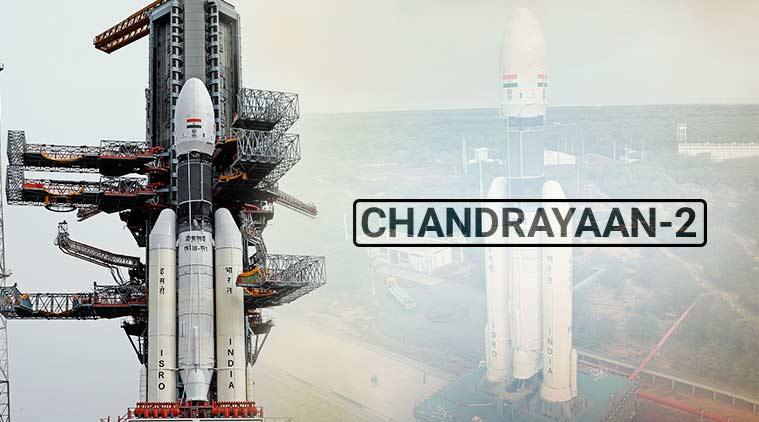Chandrayan 2: Celebrating the three scientists belonging from East India.
03-Aug-2019 | Post By: Ph.D.online

Congratulating every scientist who has led down his hand in the successful launch of India’s momentous moon mission Chandrayaan II on July 22, 2019.
The two scientists: Dr. J N Goswami, Dr. D K Das and one from Manipur Hidam Rajeev Singh, have carved a respectable niche for themselves on the occasion and their feat is indeed a source of immense joy, pleasure, and pride for the entire northeast. People have started to look up to them, which is a very positive move. Their Facebook is just a reflection of the attention they are getting, unlike any other celebrity or artist.
Detailing the contribution and education background of Hidam: An alumnus of Assam Engineering College, Hidam did his schooling from Jawahar Navodaya Vidyalaya at Pailapool in Assam’s Cachar district and hails from Manipur. He was part of the team which produced the Stage I Solid Stage Rocket Boosters for Chandrayaan 2 which took off from Sriharikota in Andhra Pradesh on July 22.
Detailing the contribution and education background of J N Goswami: He was the principal scientist in India’s moon mission and currently chairman of the advisory board for the follow-up mission Chandrayana 2. Goswami was born on 18 November 1950 in Jorhat and started schooling there. In 1965, he got 6th position in the higher secondary examination conducted by AHSEC, and then he joined prestigious Cotton College to study Physics. He got MSc Degree from Gauhati University and joined Tata Institute of Fundamental Research for Ph.D. In this period, he also worked as a post-graduate research scholar at the University of California, Berkeley. In 1978, he got a Ph.D. degree from Gujarat University. He was the Chief Scientist of Chandrayaan-1 and was also the developer of this project. He served as a director of Physical Research Laboratory situated at Ahmadabad, Gujarat. He has had numerous awards to his name. Wikipedia has a lot to tell about his contributions.
Detailing the contribution and education background of Dr. Dipak Kumar Das: An alumnus of Cotton College. Dr. Das is presently the director of Space Applications Centre (SAC), ISRO. The SAC had a pivotal role in Chandrayaan-2’s successful launch. Dr. Das did his Pre University from Cotton College in 1976-78, then graduated in Electronics Engineering from Indian Institute of Technology (IIT), Banaras Hindu University (BHU) formerly known as IT-BHU.
Das started his professional career at Space Applications Centre, ISRO in 1983 in the area of Communication & Navigation Satellite technology. He is a recipient of ISRO-ASI award for the year 2010 for his contribution in the area of Spacecraft and related technologies. He is also a recipient of ISRO Merit Award for the year 2010 and ISRO Performance Excellence Award for the year 2015. He is also a member of the Space Communications and Navigation Committee (SCAN) of International Astronautical Federation (IAF). He is also designated as Chair of ‘Committee on Earth Observation Satellite’ (CEOS) for the year 2020.
Surely the Cottonians would be very proud now and it is shown by the statement that came on facebook “We, the Cottonians are extremely proud to have ex Cottonian Dipak Kr Das, Director, Space Applications, ISRO who was in the team that launched Chandrayan 2 yesterday. His achievement with his team has put the country in the big league.”
About the Chandrayan program: Chandrayaan program, or the Indian Lunar Exploration Programme, is an ongoing series of outer space missions by the Indian Space Research Organisation (ISRO). Former Prime minister Atal Bihari Vajpayee announced the project on 15 August 2003, in course of his Independence Day speech after the idea was first mooted in 1999 during a meeting of the Indian Academy of Sciences. The Astronautical Society of India carried forward the idea in 2000. Soon after, the Indian Space Research Organisation (ISRO) set up the National Lunar Mission Task Force which concluded that ISRO has the technical expertise to carry out an Indian mission to the Moon. In April 2003 over 100 eminent Indian scientists in the fields of planetary and space sciences, Earth sciences, physics, chemistry, astronomy, astrophysics and engineering and communication sciences discussed and approved the Task Force recommendation to launch an Indian probe to the Moon. Six months later, in November, the Union government gave the nod for the mission. So, the two scientists from Assam, Dr. Goswami and Dr. Das, figure in such an elite assemblage of celebrated scientists.
Fact: A total number of 38 soft landing attempts have been made by space agencies in the world to soft-land on the moon, so far. The success rate is 52 percent.
Source: Nagalandpost.com, Indiatoday.in
Image Source: Indianexpress.in

